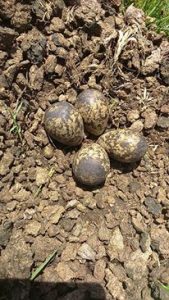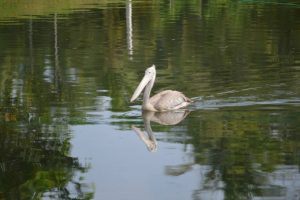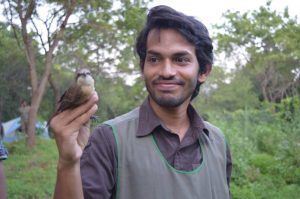Let’s look at the world beyond the bird eye…
“Mom who’s that bird….?”
“Duwa. It’s just a Sparrow”
“No….. Mom. It looks like a Robin with nice beak…? Hah…”
Today I understood my curiosity on birds and decided that I want to know more about them. Finally I ended up this thought that, one day I will get in to the bird world.
Since the day we opened our eyes it’s Mother Nature that has been around us. Greenery is the most twisting colour for our eye sight. Even though we have been wandering in nature from the day we were born, nature’s not small to be explored like that. Simply nature is infinite.
So how interesting could it be if we have those light wings as birds to fly away to the skies above. My thought is that there are different meanings to life and one of them is to feel the nature. So it is much better if we have lighter hearts, keen and innocent eyes as birds to work with nature as well as with human.
Few years later in the year 2014 I entered the University of Colombo, Faculty of Science and got the opportunity to be a member of Field Ornithology Group of Sri Lanka(FOGSL). I feel it is worthwhile to give a flash back of those wonderful days. Finally I was lucky enough to join this lovely society.
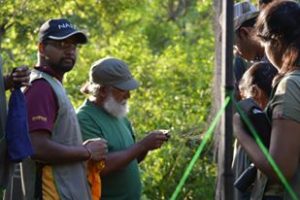
We participated in field works under the remarkable guidance of Prof. Sarath Kotagama, Dr.Sampath Senevirathne, and the Assistant lecturers, where we were lucky to gather enormous talents in identifying birds by their calling and appearance. Also it was a very interesting activity to observe the behaviors of birds.
We have learnt how to do proper bird ringing and netting while doing those field exercises. Finally we practiced punctuality as a result of those birding programs.
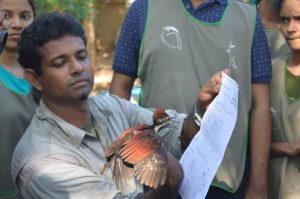
Field visit to Yala National Park and Mannar Sanctuary gave us many unforgettable experiences that anyone can revisit and live in them by recalling those memories. The unpleasant incident which we learnt was that due to Slattern Yard, the Flamingo population of Bundala was gradually decreasing due to the lack of oysters and snails as their main prey. In Yala National Park we got another interesting experience with birds. As an example, we have observed through binoculars the behaviors of Red Wattle Lapwing who lays eggs on cow dung and it was very interesting ethological study.
How did we gain that much of patience to keep a keen eye on specific creature for such a long time?
When talking about the Mannar field visit, we learnt that in the migratory season of birds each year, large flocks of birds come on this fly way Mannar Island, one significant place for birds to stop over. Also we learnt that Whiskered Tern’s fly way is affected by upcoming Wind power plantation of Sri Lanka. Based on the observations we also got to know that Rudy Turnstone’s have faced some risks due to fishing industry such as usage of unauthorized equipment’s and other related activities.
It was really surprising to see how soon the Mannar Island has dried off within a short time period; the birds we were expected to see weren’t there anymore. But we immediately noticed that a big group of Rudy Turnstone were flying around the beach looking for left over fish .
It’s happy to say we were not the only people who gained knowledge through this field visit series. Few of our colleagues improved their photography skills during those field visits. Rudy was moving all over the place and we were crawling after them all over as well. Finally when the angle and light was right, we got really close to the birds and started shooting tons of photographs of them, getting the best out of the moment.
When we were in Mannar, dawn revealed a vast group of ducks huddled together in the far corner of the water body. After an hour of lying patiently we were finally rewarded with ducks flying and landing right in front of us.We were able to identify three different types of species of Waders away from the flock. The abundant Northern Pintails with their pointed tail feathers, the Gangrenes and most unusual of all the Northern Shovelors with their unusual bills akin to a shovel with the rising sun, more birds began fly from the east and what interesting scenery that was to experience at least once in our lives. Eurasian Spoonbills with their amazing white plumage flew in and landed in front of us.
The beauty of these graceful birds was further enhanced with the golden morning sun. Whiskereds flew above us. And the ducks swam a few feet from where we were hiding, completely oblivious to our presence.We were directly attached with the environment at that time and the feeling is simply indescribable. All of those observations about birds were very exciting experiences and new things to us as undergraduates. The Wetland in Mannar around the cause way is home to Northern Pintails who have a very unusual feeding method of floating with their heads under water and their backs in the air. Also we witnessed a flock of Pied Avocets which were rare winter migrants to the region. So that Mannar is the Holy Grail for bird watchers and for newbie’s like us. It is a treasure chest of untold creatures waiting to be explored under the guidance of FOGSL. Despite its legal protection, all the sanctuaries such as Yala, Mannar and other places are surrounded by human habitation resulting huge amounts of garbage being dumped in sanctuary area. Observation revealed items including none degradable wastage such as plastic and polythene.
Further the deforestation of Yala national park is a grave threat and a devastation to the birds and other animals who are inhabitants of that particular area. Also the new rail way line boarders of Mannar sanctuary results in continuous human activities. A firm strategy is direly needed in order to provide real protection to Yala, Mannar and other bird sanctuaries. Those fragile eco-systems are special to Sri Lanka in their diversity of migrating species each year, residential birds. They are natural heritage sites that saves our future generation.
The FOGSL group is doing remarkable service on bird conservation in Sri Lanka. As undergraduate students we got to know, while traveling along the flyways with the birds and Field Ornithology Group colleagues that Sri Lanka is a land like no other in uncommon richness of the biodiversity. Finally what needs to be taken in to consideration is the contribution for sustainable environment with minimum impact to the bird life and their eco-systems. I believe that better planning is required to preserve those bird habitats for future generation.
The nature and sciences have always been avenues where the milestones mark every interaction between mankind and the animals.
To reveal the means of nature FOGSL became the biggest guide like Eagle which enlightened us with wide and sharp knowledge as well as unforgettable experiences. Lifetime of experiences via bird watching were grist of the observations, and conclusion is where we most delicately reflect the power and the glory of the nature.
Thanks to our teachers we learnt how to deal with animals as well as human, to work with equipment properly, to develop photography and also writing skills with those birds watching camps. We got lots of opportunities and we learnt most of the things about birds’ lives within a short period of time thanks to FOGSL. And also we improved our knowledge on bird conversation techniques.
“So I expect to explore more about bird’s life and it will be the nice Bird’s Story that I wished for in my childhood”
(Acknowledgment: I am greatly indebted to Prof. Sarath Kotagama, Dr. Sampath Senevirathne, Assistant Lecturer Mr. Chmil Rajapaksa and Miss Ruwansha Galagedara.
I am also grateful to my colleagues Anuradha Kaushalya, Yorin Fonseka, Prabhavie Opallage, Dinushi Armbegedara, Madushan Dias, Isurika Wigerathne, Amaya Sathurusinghe, Dileema Jayasinghe, Dinithi Fernando and My Parents for their support and encouragement.)
Photographs by Anuradha Kaushalya
Sketches by Dimuthu Fernando and Yorin Fonseka


